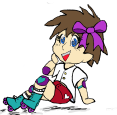
Digital accessibility can feel hard when people first start on their journey, it can take you on odd turns and sometimes you are going to stumble or even need to go backwards (sometimes intentionally and sometimes not) to learn how to go forward with confidence. Don’t you wish someone would explain the basics of digital accessibility in an easy-to-understand way? Well put on those skates and lets learn through analogy of skate culture. Let’s try to stay upright.
In this article you will learn the basics of digital accessibility through the analogy and remarkable similarities of learning to skate as an almost 40 year old who has the motor control skills of an elephant on ice.
Please note due to some technical issues with the sites theme, tables do not operate correctly on all devices. If you have trouble with the tables please see the alternative blog without tables.
The Anatomy of a Skate
There are a lot of parts to a skate. Much more than a boot and wheels and every part is important (well maybe not all pieces arguably spacers are just unnecessary and toe stops – pfff).
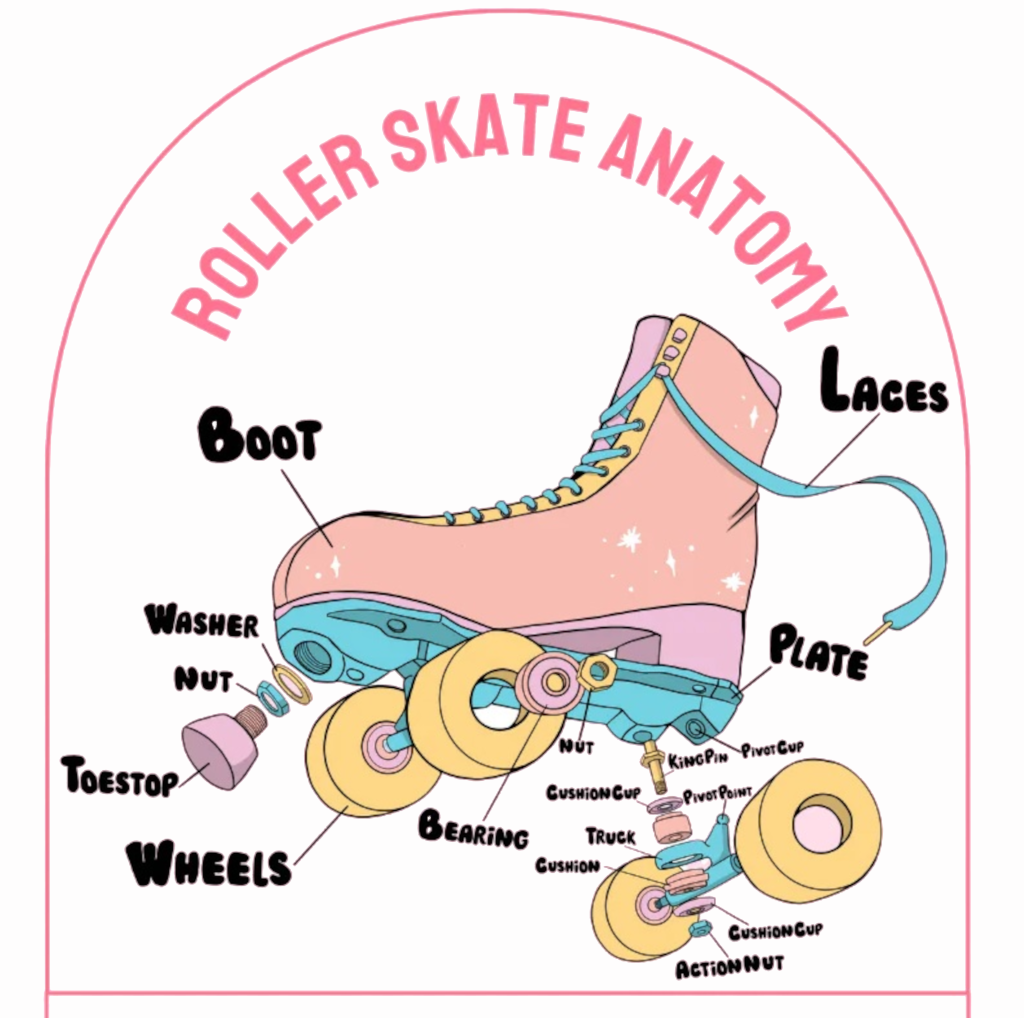
The components and how they work together
| Component | Location | Purpose |
|---|---|---|
|
Laces
|
Usually top of boot (sometimes under wheels – it hurts)
|
Keeps those darn skates on so you can impress with awesome tricks
|
|
Boot
|
Isn’t it obvious
|
To be pretty, flashy and look cute. Somewhat essential to this whole skating thing
|
|
Washer (for toe stop
|
Front of the plate
|
Allow toestop to be tightened and loosened to adjust to the right positioning for the skater
|
|
Nut (for toe stop)
|
Between the washer and toestop
|
Allow toestop to be tightened and loosened to adjust to the right positioning for the skater
|
|
Toestop
|
Front of the roller-skate approximately 45 degree angle (though can change)
|
Depends on who you talk to. Speed skaters – no toe stops. Rooky novice who doesn’t want to break their neck outdoors – bring on the toe stop!
These things bring you to a clear quick stop (and if you don’t know how to use them and even faster stop which is slightly more painful.)
|
|
Wheels
|
4 at front and back of skates
|
The part we don’t want to keep reinventing but without we wont get moving.
|
|
Bearings
|
Inside the centre of the wheels and attached to the trucks
|
The part which does the most work like a fidget ring the middle stays stationary but the outside moves allowing your wheels to turn
|
|
Nut (for wheels)
|
Outside of the bearings
|
Holds your wheels on. Tightness decided how quickly and freely your wheels can turn
|
|
Plate
|
Directly underneath the boot
|
Plate (the item running the underneath length of the boot which attaches to boot, wheel structure and toe stop)
|
|
Pivot Cup
|
Back of the plate
|
Pivot cup (where your pivot point sits, assists in lowering/increasing resistance and wear on the pivot point. )
|
|
King pin
|
Under the heel connecting into the plate
|
Ensures the wheel structures connect to the plate) steeper the angle the less pressure on the axles
|
|
Pivot point
|
Connecting to the trucks and pivot cup
|
Give the skater precision feel with more feedback when skating, suspension)
|
|
Cushion Cups
|
Connecting to the trucks and pivot cup
|
Give the skater precision feel with more feedback when skating, suspension)
|
|
Trucks
|
Front and back of skates connecting the wheels
|
Absorb shock and vibration should be adjustable to allow different ease of movements such as move, turn and maneuver, tighter provide stability, looser allow faster movement
|
|
Cushion/Bushes
|
Between the components of the trucks and cushion cups
|
Absorb shock and vibration should be replaced once a year
|
|
Action Nut
|
Bottom of the wheel components
|
Holds all your suspension on.
|
The Anatomy of Digital Accessibility

OK that is probably Information overload, so let’s break it down!
The components and how they work together

Components: Budget (laces) and Marketing (boot)
Budget
The budget holds your program on for your company. Like shoe laces if your budget is too short, you are going to struggle to move much as you will be constantly worrying if you can hold everything together and not have it all fall off. Too long and your budget gets in your way and trips you up because you buy products that are too advanced for you and then become disheartened when they don’t help as you would expect.
Marketing
They are flashy and know how to attract attention, but you want them to attract the right attention. If your marketing material is unappealing and inaccessible you are going to lose clients. When skating at the rink I avoid anyone with the dirty rental skates, because they probably don’t know what they are doing. Customers do the same with marketing.
Marketing teams however though, usually have no understanding of digital accessibility and see it as something difficult and time consuming. It is worth spending the time to get these folks understanding the importance of accessibility for customers and for improving search engine results.
Components: Stakeholders (toestop), Tools (nut), Procurement (washer)

Stakeholders
Like toestops they can decide how, when and why you stop. Nothing quite brings you to such as forced and painful stop than an incorrectly placed toestop. If your stakeholders can not see your vision they are always going to be in a different place than you hoped and they will pull you down. That is why it is important to keep your stakeholders happy and ensure you are bringing them on the journey with you, not fighting them. The crucial thing which keeps stakeholders engaged is how you demonstrate your success. This is guided by your tools.
Tools
The right tools make it easy for stakeholders to understand how features are tracking and the success of your program. If you put technical tools in front of a stakeholder they are probably going to get confused and loose interest. But if you show them simple and clean tools they are much better at seeing your vision. Most people when we talk about tools only think of testing tools and assistive tech. I have been demonstrating these tools for business stakeholders and execs for a long time and what happens everytime is it takes too long for them to understand and follow and they lose interest because they have other places to be. So to keep your stakeholders happy I recommend quick (and cheap) tools that are easy to follow. Tools such as site unseen, ColorOracle and Silktide.
Procurement
Are the tools you are purchasing accessible? If they are Content management systems or tools which generate output can the output they generate be accessible? If the answer to these questions are “No” then in the long run this will move you further away from your accessibility goals and will make your stakeholders frustrated at the lack of progress. Introducing reviews for accessibility at the procurement stage (the same way you would for security) ensures you are not worsening your situation. Seek VPATs, check out OZeWAI.org’s Product Accessibility List (PAL), for authoring tools look at ATAG.
Components: Metrics/KPIs (wheels), Champions (bearings), Plan (nut)

Metrics/KPIs
If accessibility is an afterthought or a “non-functional” then you are going to get nowhere. You can’t move a roller-skate without wheels (unless you throw it away) that is a simple fact. Metrics are the same. If there is no accountability no one is going to try to move forward.
Champions
Your Champions are your bearings. They decide how fast you move and they need to be supported by your Plan (the action nut).
Now here is the critical thing to note about this. You can not force someone to be a champion! I can go out a buy any bearing for my skates but if I do not pay attention to the bearings, the ones I get are not going to fit my wheels or onto the trucks. If you force someone to be a champion, they are never going to be the right fit. So you need to recruit people who are already interested and engaged. Mood is contagious. You get someone in your team who is passionate they are going to influence others. It goes the other way too.
Champions also do not need to be technical people. Some of the best champions I have encountered have no technical skill but they have a passion and drive that is immeasurable. Some of them have even later trained up to technical roles because they followed their interest.
Plan
Be this an Access and Inclusion Plan, and Disability Action Plan or even a Disability Employee Network’s plan, you need one. The plan unifies people around a common goal, provides the metrics to verify success and keeps people engaged. I worked with a fantastic disability employee network, but they had accomplished very little because while they had a handful of engaged people, they didn’t have a plan and understand how they could have a unified goal. Once we sat down and created a plan and then communicated that plan, the team tripled in size and became self-organising. Even a plan which consists of this is where we are, this is where we want to be and this is the timeframe will get people thinking. There can still be blurred lines and you can keep moving.
Components: People with Disabilities (plate)

People with Disabilities
Not about us Without Us. We have heard this time and time again but people still try to design websites, mobile apps, digital kiosks without consulting people with disabilities. If I want to create the best skate for figure skating am I just going to talk to speed skaters or derby skaters? No. You need people with disabilities in your champion programs, you need people with disabilities in your UAT programs, your research programs, consulting on your plans, heck you need people with disabilities sitting on your board. But we can’t even get women on to boards so let’s fight the smaller battles first. Without a plate your skate don’t skate. It doesn’t have the core feature. Not about us Without Us.
Components: Accessibility Specialist (king pin) and Executive Support (action nut)
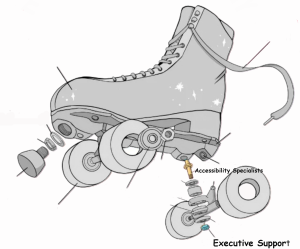
Accessibility Specialist
Yep they are the king pin. Everyone thinks they are the wheels the bearings the washers the boot, the laces and the pivot point. If you up your game and your accessibility specialists have disabilities too then they are also the entire plate of your skate too. But that is the problem when someone does a fantastic job then in organisations people want to give them more responsibilities so they can transform all the other areas. I may be holding your skates on but heck please don’t make me the cushion or the truck too. All that is going to happen is that there will be no cushion for me and I am in for a very bumpy road. Then one of the “Road blocks” we will talk about later happens.
Executive Support
I cannot stress this enough. No executive supports and buy-in your wheels are falling off. Executive supports drives your momentum forward. Just like your stakeholder engagement can trip you up, executive support impacts stakeholder, budget, metrics, budget. No one is going to buy a skate missing the whole back wheel support system.
Components: Risk management (pivot cup), Standards (trucks) and Strategy (pivot point)

Risk management
Hypothetically if a skate had no pivot cup what do you think would happen? Yeah probably feel a fair bit unsupported, moving in all kind of directions without control. Using up all your talent and a bit of luck too and then at some point you are going to learn to fall in the way every skater has done at some point. Either on your butt, 4/10 not so bad unless you do it repeatedly, my butt is pretty well padded, or you are going to pirouette, have your skates go in two different directions and do the splits. I have done this. 2/10 would not recommend. Only worse fall is superman pose to shoulder dislocation 0/10, seek help.
Standards
Standards generally help drive your strategy. If you are targeting a particular standard to meet needs of your customers and employees then your strategy will include your intentions and how to deliver.
In the digital accessibility space there are many standards
However what it critical to digital accessibility working in your organisation is developing your own standards based off the generic standards. This can look like code repositories which document how you implement certain features e.g. Your navigation menus and custom controls. These organisation standards will define how and when you use them and also the key items to keeping them accessible.
An example of defining an organisational standard is The New Zealand Government Digital Accessibility Guidelines and The New Zealand Government Web Accessibility Guidance Project.
Strategy
Which direction do you want to go? Not really sure? Then open your door to strategy. Everyone seems to have this idea that Strategy is set in stone but it so isn’t. The point of strategy is aim for a direction but if suddenly that direction is not where you want to go well you pivot. So it makes perfect sense that your pivot point is what decides where you go is linked to strategy.
Components: Training and External support (cushion cups) and Policies (cushions)
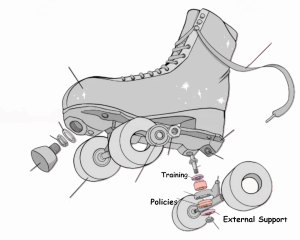
Training and External support
Interesting we have two cushion cups. One being for training and another for external support. I think we can all see where this is going… you might need external support for a number of reasons, it could be assistance writing policies, auditing your systems or sanity checking your procurements decisions. The primary reason however tends to be training.
Policies
Policies determine if you are in for a bumpy ride. If you write policies in your organisation which do the following you are going to find it hard to get your accessibility strategies met.
- Flexible working arrangements which have no exclusions for people with disabilities or their carers – retention of you staff will become much more difficult.
- Recruitment policies without adjustments – you will not bring in new talent.
- Workplace adjustment policies which are onerous – people will not undertake them and perform less than their ability should adjustments be provided. This can again lead to attrition.
- Software procurement policies – You will purchase expensive hardware and software which is not accessible causing loss of time and reduced performance for your staff while also causing frustration.
- Health and safety policies – If your policy adds significant time logging issues (e.g. I had a minor seizure in the office, it took me 2 hours to fill in the paperwork and then the next day had another seizure and had to do it all again. This was a known condition and was not an issue) people will not follow the policy and stop reporting issues which could lead to a bigger problem overtime.
The Journey
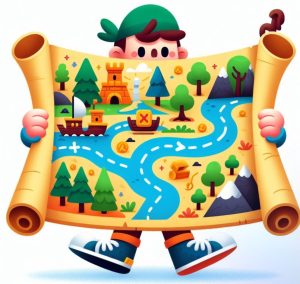
You are never done learning – there is always something you can refine

When I started skating my goal was to just be able to skate outside a bit and not be stuck on a rink. Before I knew it I was doing that. Then my goal became being able to do cross overs, then it was backwards, then one leg turns.
What you think you know about the future is not how the future looks. The more you look the more you find out and the more you learn and refine.
You can outgrow your skates or they can just fit incorrectly

Just like how you can outgrow your skates and need a new pair with more features, more speed and more consistency, you can outgrow your accessibility strategy.
If in year 3 you are still focusing on the same things from year 1. You have outgrown your strategy.
Example
Year 1
You create a survey to identify your biggest challenges and you discover that your organisation has a lack of diversity. So you look at making your hiring practice inclusive.
Year 2
Your hiring practices are working out great but you still have a lack of diversity so you start looking at other causes. It seems you have a high attrition rate for people with disabilities. You continue to refine your hiring practices but you also start looking at retaining key talent.
Year 3
You identify your diversity is going well but engagement is low. You look at how to incentivise.
Where it would go wrong
If you kept your focus for the three years as just reviewing your hiring practices, you would never retain your talent pool.
Don’t tie yourself into a previous strategy when your new horizons show.
You need to keep your eyes on where you are going
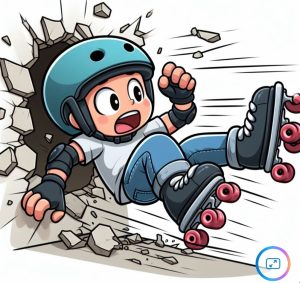
The number 1 rule of skating is: don’t look at your feet! Guaranteed 100% if you are busy looking at your feet you are going to fall over. Skating has NOTHING to do with your feet. It is all weight distribution, confidence and practice.
If you build a strategy and focus on the small problems, neglecting the bigger picture you are going to fall.
At some point you are going to hit a wall, rock or roadblock
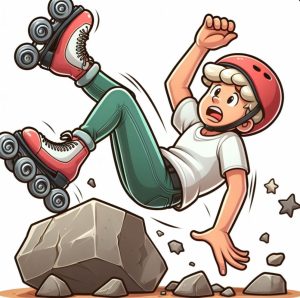
You always need to plan for the risks. When skating you need to weigh up the risks of protection vs comfort. I for example wear wrist and knee pads because otherwise darn it hurts. I however do not wear a helmet, elbow pads or padded shorts. I assessed the risk to comfort ratio and this works for me. Only once have I hit my head and that was stupidity and if I land on my butt, lets just say I already have enough padding.
When you are starting out on an accessibility journey it is the same thing you need to prepare for roadblocks risks.
I will discuss more about road blocks in later articles.
How to get started
Now you know the components, it is time to start rolling. Checkout our next article: How Digital Accessibility is Like Roller-Skating (Part 2, Starting and Staying on a Roll)
